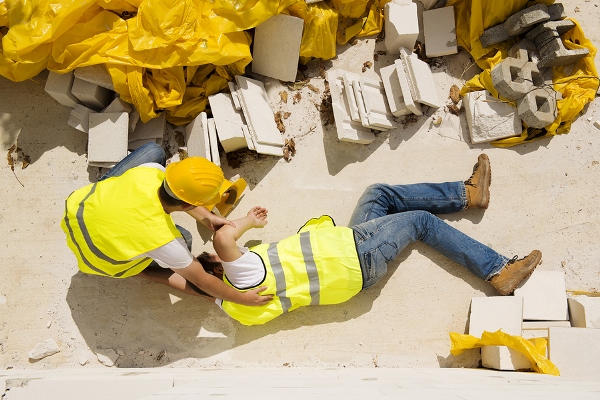Slip, Trip and Fall Prevention

OSHA reports slips, trips, or falls cause almost 20 percent of all workplace injuries.Slips and falls do not constitute a primary cause of fatal occupational injuries, but represent the primary cause of lost days from work. A study by Bureau of Labor Statistics in 2002 found that 22% of slip/fall incidents resulted in more than 31 days away from work.
According to Workers Compensation statistics from ITT-Hartford Insurance Company, falls account for 16% of all claims and 26% of all costs. This compares to 33% of costs associated with sprains and strains
Nearly all slips or falls have one or more of these factors as a cause:
- substandard walking surfaces;
- surface contaminants;
- footwear;
- walking style of the person.
Proper housekeeping and lighting of working and walking surfaces can prevent most slips, trips, and falls. Sometimes surface contaminants can be very difficult to recognize as a hazard and once the hazard is noticed, must be cleaned up to prevent any risk of injury. Wearing the proper footwear for current weather conditions, as well as the surfaces being traveled, is important to prevent slips, trips or falls, and reduce fatigue.
Incidents that can occur on walking and working surfaces:
Trips occur when an obstruction catches the worker's foot and causes him or her to stumble forward. Tripping hazards include cords, equipment, uneven floor mats, and unseen or unexpected objects. These tripping hazards should be picked up and put away after every use, and when they are in use be aware of the danger they could pose in a walkway, such as an electrical cord strung across a sidewalk.
Slips occur when an individual slides along smoothly causing a loss of balance. Slipping hazards include wet, icy, greasy, or soiled ground or floors. People need to wear the proper foot apparel appropriate for the job, such as steel toed and slip resistant. Use absorbents to clean up any spills, especially oily material and corrosive materials.
Falls occur from an individual descending freely by the force of gravity. A fall can happen from any surface higher than four inches such as ladders, hydraulic lifts, large equipment, elevated walkways, ramps, or platforms. Falls may also occur into or through a hole. The majority of falls occur from heights less than 10 feet, so safety precautions need to be taken, even at lower heights.
Safe practices for individuals
- Utilize handrails or grab bars in areas where there are stairs or changes in elevation.
- Use 3 points of contact when mounting or dismounting equipment (1 hand/2 feet) or (2 hands/1 foot).
- In wet or icy conditions, take smaller steps and try to ensure your torso stays balanced over your feet.
- Use slip-resistant matting or provide textured surfaces in potentially wet areas.
- Minimize distractions to remain alert to hazards and avoid carrying bulky items that block your view.
- Remove obstructions from travel areas, such as extension cords, power cords, hoses, boxes, or tools.
- Stay alert to parts projecting from machines or equipment.
